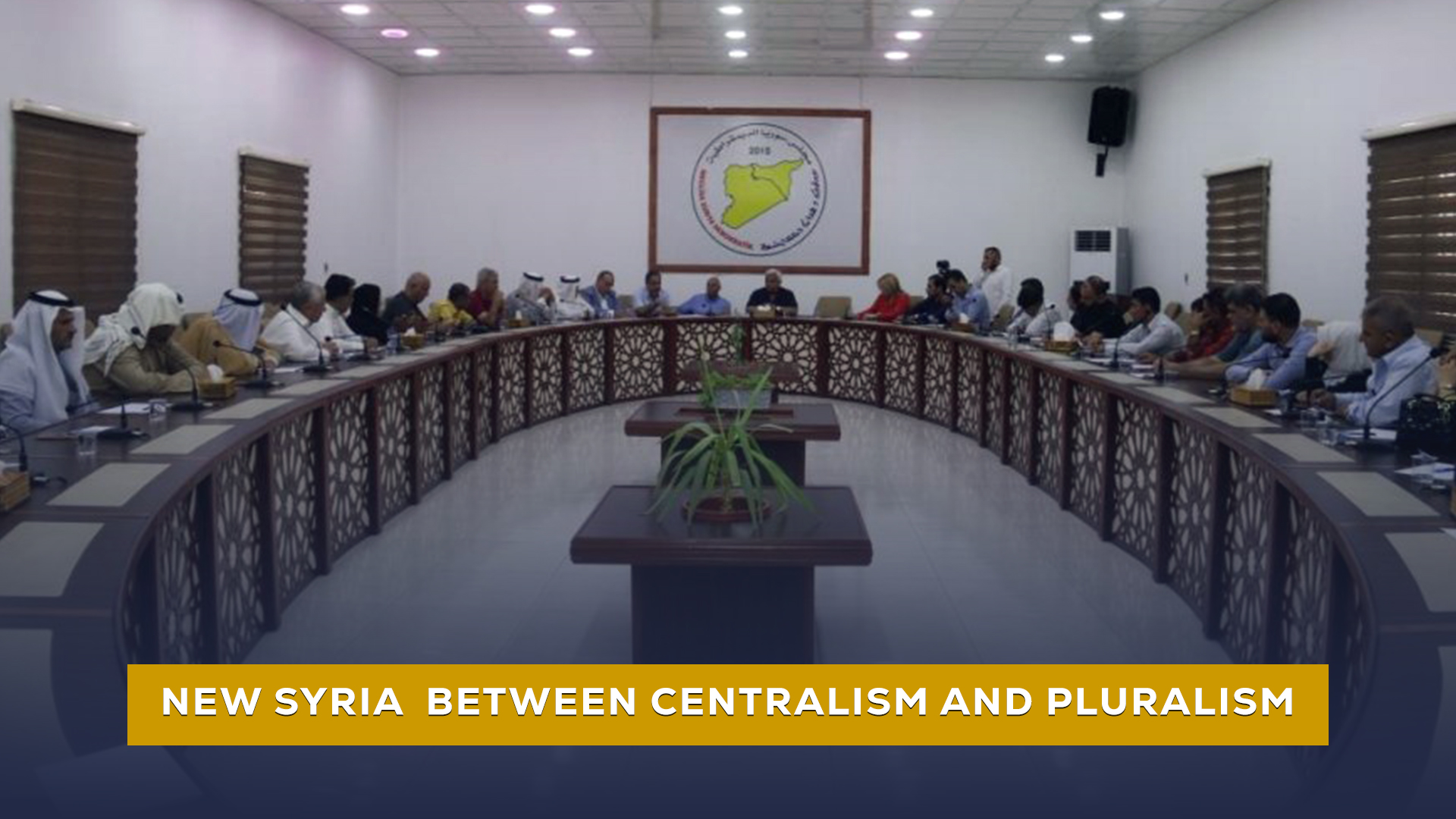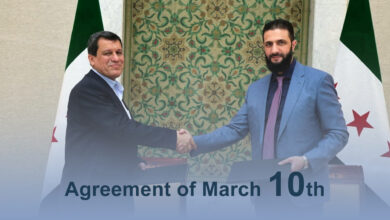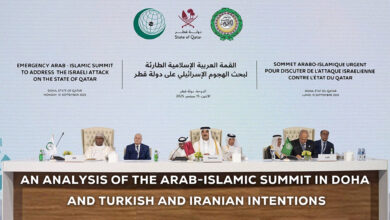
Syria after December 8, 2024 is not the same as before. After the escape of Bashar al-Assad, the Head-ruler, and the fall of the Arab Ba’ath Party, as a system and ideology that had effectively led Syria since March 8, 1963, Syrians felt a new situation leading civil society in Syria without Assad and the Ba’ath Party. Consequently, the legacy of chaos he left behind, including the destruction of infrastructure, the economy, and society, weighed heavily on them, and its features have become clear over the past six months. However despite the amount of chaos and destruction currently occurring and being experienced, we can say that half of the Syrian problem or dilemma has been resolved with the departure of the previous regime, which had brought possible solutions to the limits of the impossible due to its intransigence and adherence to the regional axis it chose, by abandoning the Sunni Arab axis and embrace in favor of the Shiite regional axis represented by the Islamic Republic of Iran, alongside the former communist camp represented by the Soviet Union and the socialist Eastern camp represented by the current Russian Federation.
At the end of 2010, the Spring of the Peoples had begun in North Africa, which spark erupt “Bouazizi’s ” in Tunisia, and spread to Egypt and Libya. It then spread to the Middle East in bothYemen and Syria, where popular movements began with completely bare chests. Their demands did not go beyond a space of political freedom and an improvement in economic and social conditions in general. One of the striking things since the beginning of the Syrian revolution is that Syrians, with all their sects, denominations, and even nationalities, have agreed – albeit in an unstudied or unorganized way – on the importance of national unity among them and on creating a kind of equal citizenship among the individuals living on this land. But the repressive and exaggerated security response from the security side that essentially controls the joints of the Syrian state was very harsh, and instead of that response being a deterrent to the demanders, it generated a violent, counter-reaction. This led to the militarization of civil demands, and the Syrian arena in general became an arena of open conflict between extremist religious parties, fanatical nationalists, ideological and doctrinal groups, etc.
The end of the role of “Bashar al-Assad” as a person and the “Baath” as a group.
It has become clear that Bashar al-Assad’s continued rule throughout the fourteen years of the crisis was an international and regional agreement, perhaps not in the official form and protocol, but rather in an inner-agreementmanner. The actions undertaken by what became known as the Operations Management Room, which was launched from Idlib Governorate and led by radical Islamist groups, most notably Hayat Tahrir al-Sham (formerly known as Jabhat al – Nusra), were merely external mobilizations after regional and international conditions were prepared to accept the new situation. This new situation is not only in Syria, but also in the Middle East, which is no longer what it was before October 7, 2023.and the lightning operation carried out by the Palestinian Hamas movement against Israel and the subsequent wave of counter-violence against the Iranian axis and Iranian proxies in the region. The urgent question that is being forcefully raised regarding Syria is: Why now? Why this rapid achievement, despite the Syrian crisis having been prolonged for such a long time? To answer these questions, we can answer, but not limited to, the following:
- Bashar al-Assad’s procrastination on the reforms he recently promised to the Arab League.
- He placed all his personal and Syrian interests in the Iranian basket at the expense of the Arabs, and as a kind of indirect challenge to them.
- Challenge the West in confronting economic sanctions, through the spread of Captagon factories on its lands, and disturbing neighboring and Gulf countries by distributing its production in the markets of those countries.
- The intransigence in the normalization process with Israel, and thus the necessity of creating an alternative and subsequently allowing other Arab countries to normalize freely when the appropriate opportunity arises.
- Controlling Syrian airspace to prevent any force that might surprise Israel or hinder its strategic objectives against Iran.
What happens six months after Assad’s downfall?
There is no doubt that the heavy legacy of the combined rule of the Baath Party and the Assad family, which spanned more than six decades, cannot be amended, corrected, or remedied in just six months—the actual age of the so-called Operations Management’s arrival to power in Syria. There is a truth that cannot be covered over with a sieve; it is that the arrival or delivery of this group did not happen by chance or as a surprise, and every step was carefully considered. Despite the rapid steps and qualitative leaps currently being taken by the regime in Damascus to become regionally and internationally acceptable, and despite the many facilitations provided by the supporting axes, led by the Kingdom of Saudi Arabia, and the mediation with Western powers to create a comfortable working environment for the new rulers in Damascus, there are some points and obstacles that limit the acceleration and frequency of their work, for example, but not limited to:
- Subjective reasons related to the mentality of the new rulers, who think and act with the same mentality as the previous ones, with control over all aspects of the state.
- Bureaucratic, political and social hegemony and thinking with a mentality of power and domination.
- – The impossibility of controlling all of their elements and factions, due to the diverse backgrounds and ideological beliefs they possess.
- Salafist hegemony and jihadist thinking that are deeply rooted in the leadership movement currently leading the scene.
- Hegemony of all powers in the joints of the state, executive and legislative, especially after the recent decision of the interim president to form the People’s Assembly and allocate a third of it to direct appointments from him, and the process of distributing the remaining two-thirds also to a formal election process in light of the current circumstances that are not originally suitable for holding any entitlements of this kind
North and East Syria Project: Building a Decentralized System in Syria
It is no longer a secret that the regions of northern and eastern Syria have become a safe haven for many democratic forces that hold liberal ideas throughout Syria, and that openness to the Kurdish regions and people has become a daily practice for many politicians, artists, and businessmen, whether in southern or western Kurdistan, and even in the areas controlled by the Syrian Democratic Forces in particular. This may be due to the degree of security enjoyed by those regions, on one hand, and on the other hand,it is due to belief in the program and the ideas it carries; through decentralization of governance, participation in it, and true representation of all segments of the people to lead themselves, and organizing all of this through popular committees and communes and conveying the demands of the general public through a horizontal, not a hierarchical chain of command and executive committees.
Following the historic step taken by the Kurdish people in Western Kurdistan on April 26 of this year, unifying the ranks and positions of all political forces present in Syria, unifying demands and a shared political vision for a just solution at all levels, and forming a joint delegation to engage in dialogue with the center in Damascus on this basis, the Democratic Autonomous Administration, through its elected committees and with genuine representation of all ethnicities and religions, has begun dialogue with the capital. Some committees and groups have even begun their work. However, the most important question that arises is: Is the current interim government in Damascus seriously engaging in dialogue and discussing the possibility of transforming Syria from a centralized state to a truly decentralized and pluralistic one, or is it merely trying to get time for other intention?
In light of the current situation, what is no longer disputed is that the era of the stifling central state is truly over, not only in the Middle East, but worldwide. Therefore, everyone must understand this and adapt to it. Consequently, the new administration in Damascus must also accept all ideas presented to it, whether from the North, the South, or the West.It must learn from the mistakes of the previous regime, which adhered to the central state and marginalized others. The result was the state we have reached today, with the complete destruction of the country’s infrastructure on all political, economic, social, educational, and other levels.




